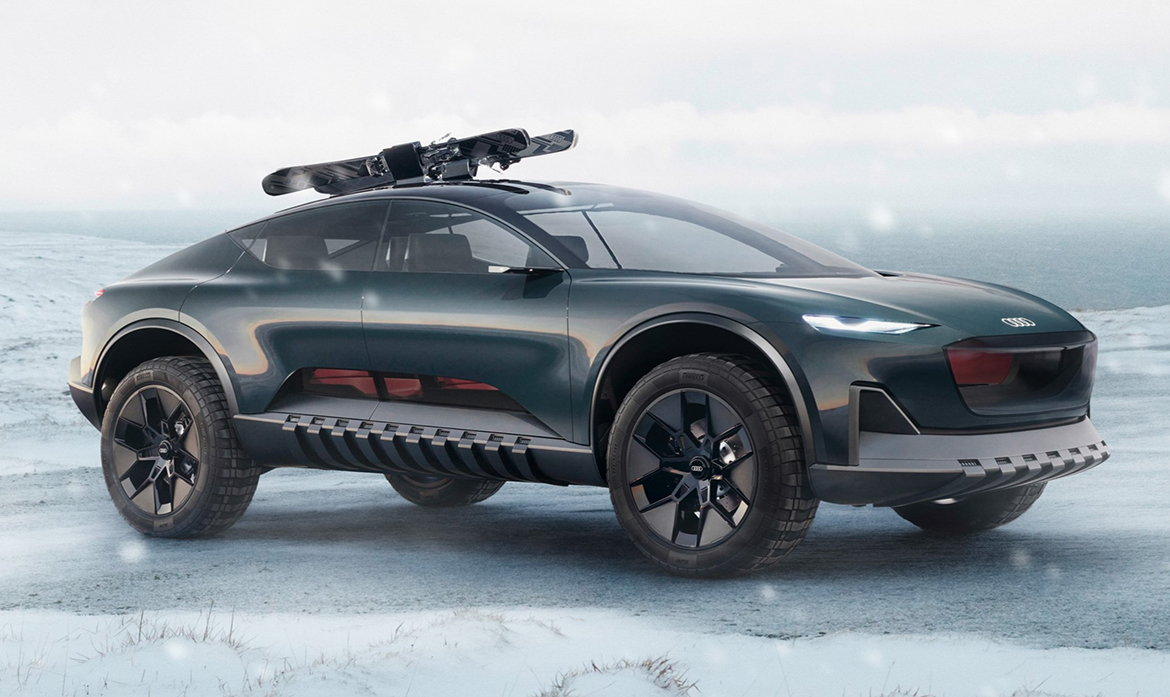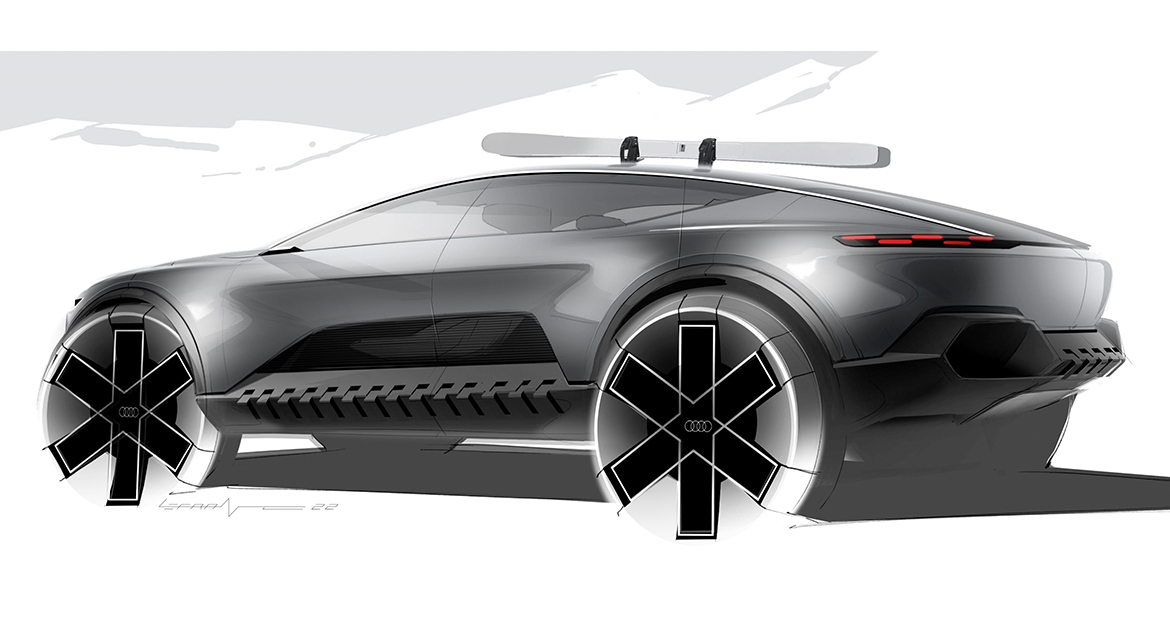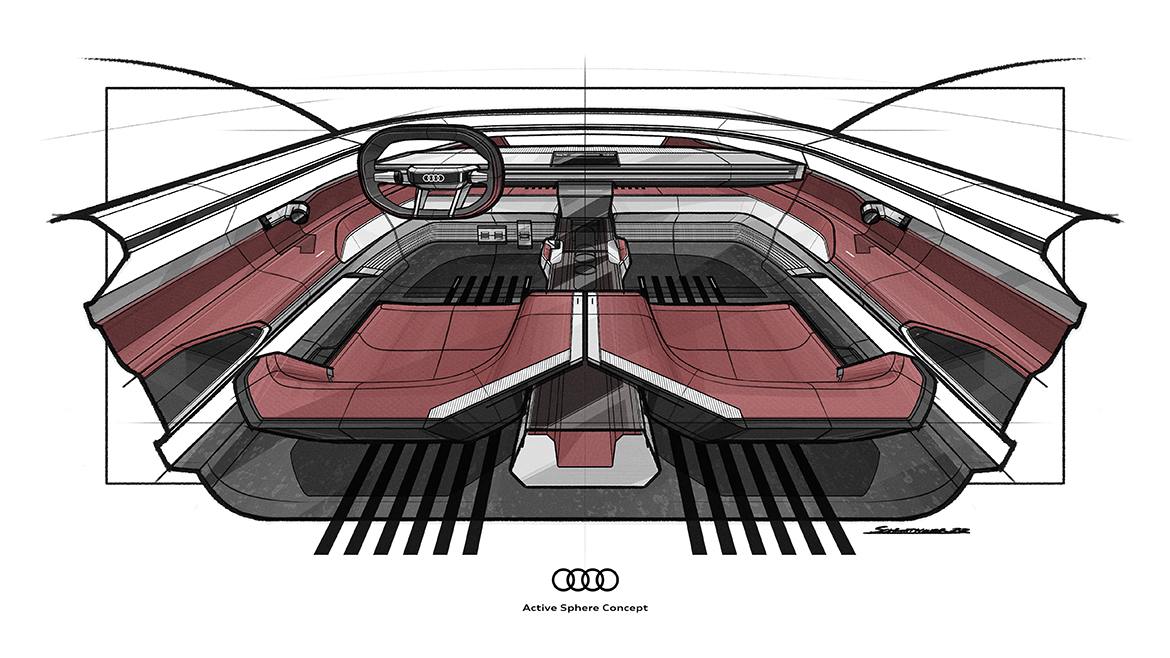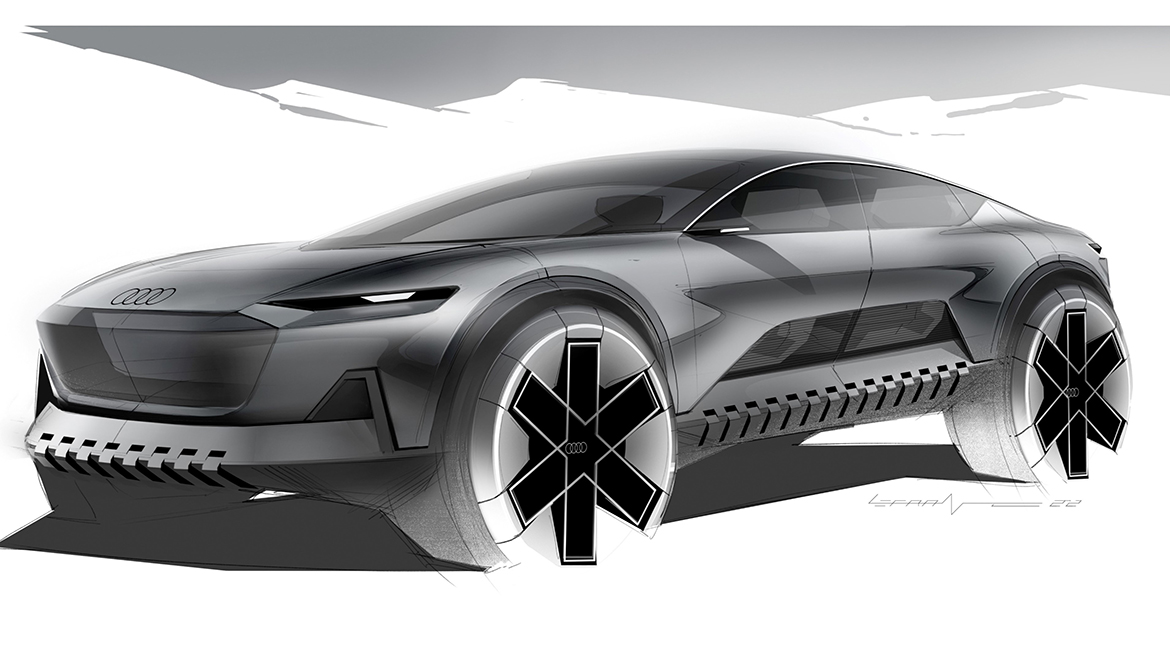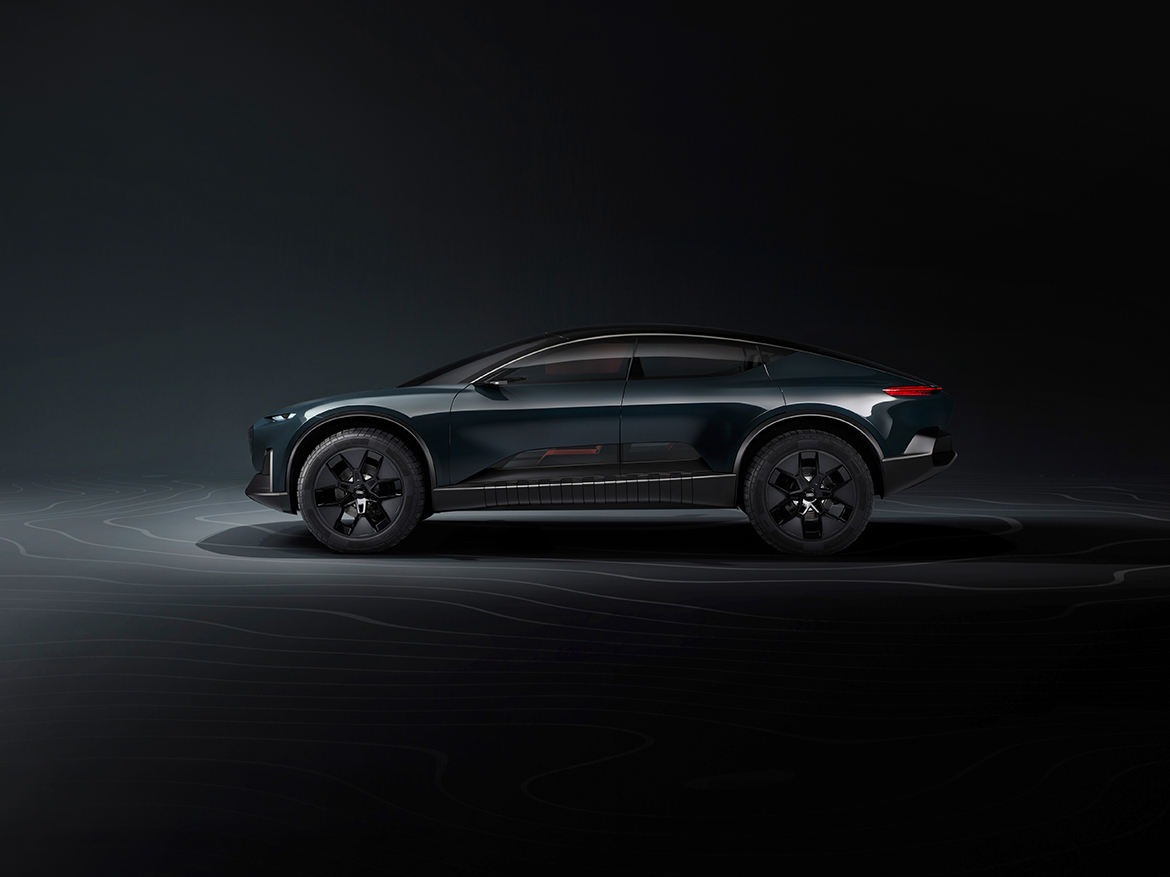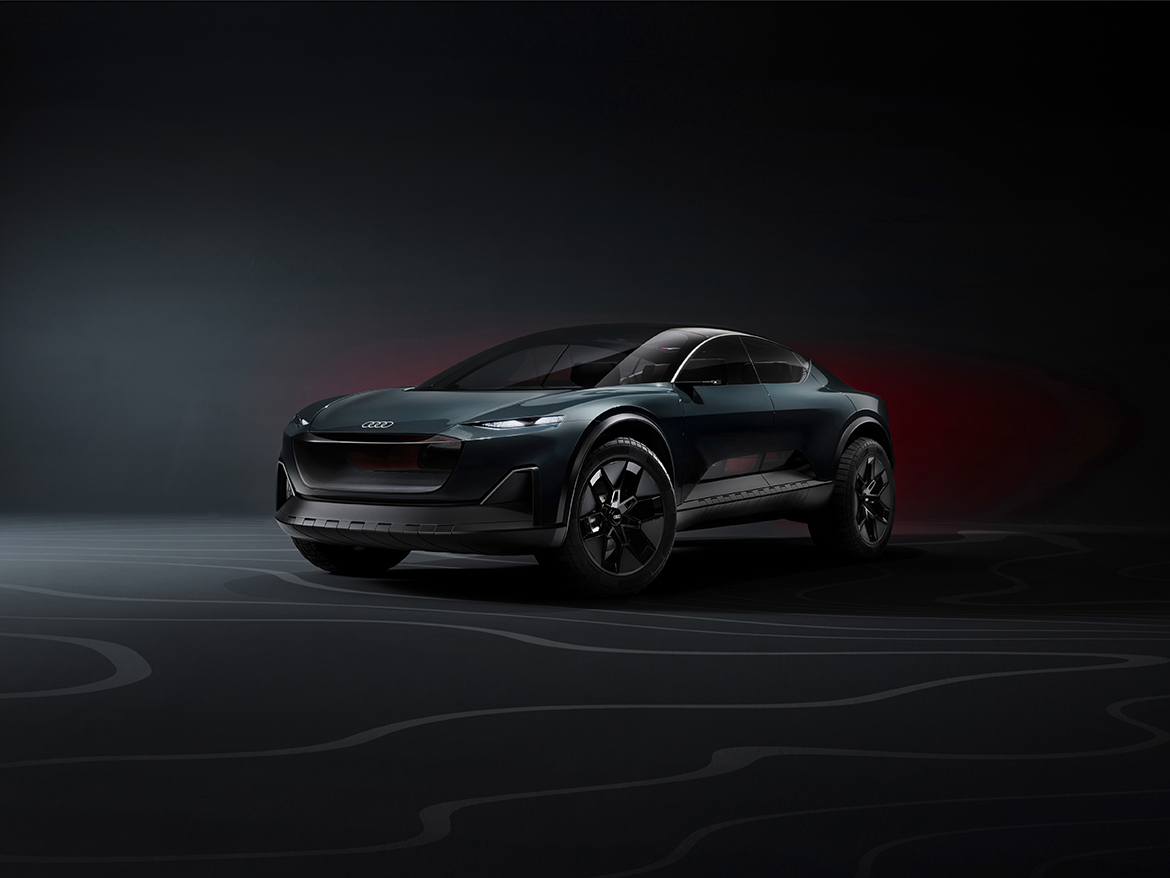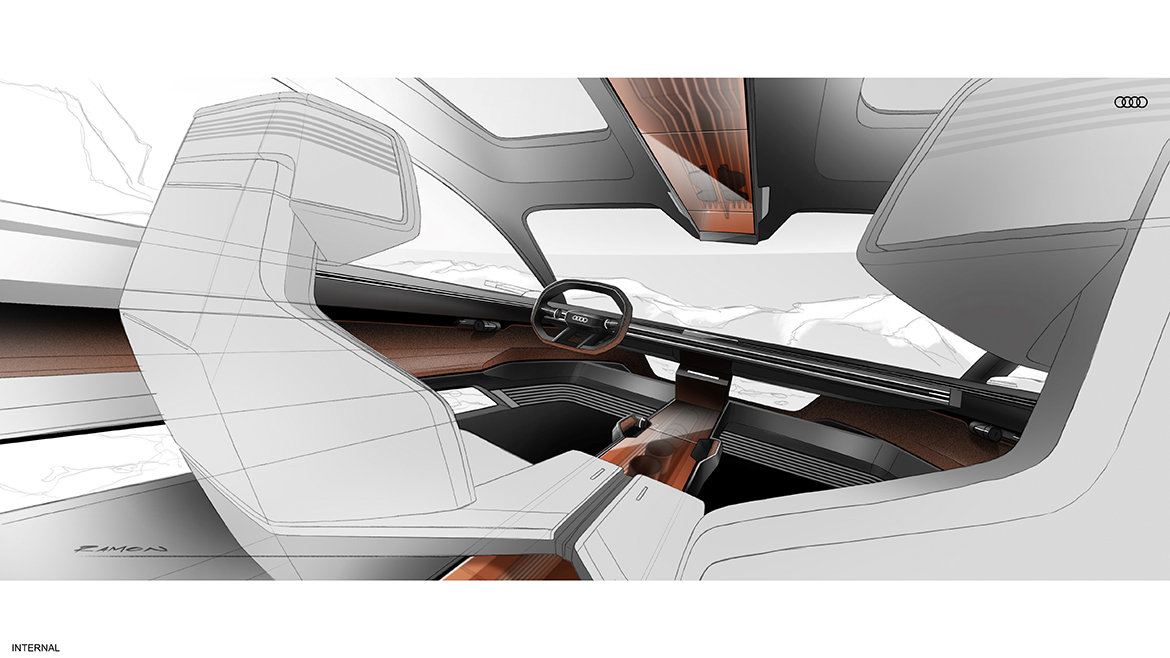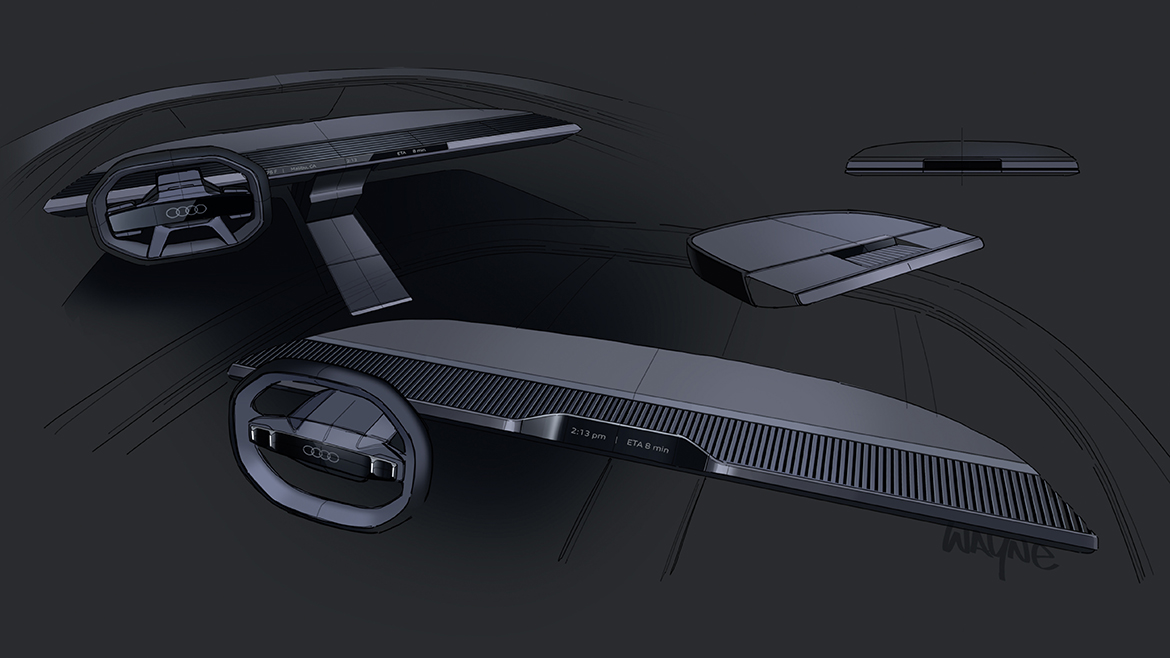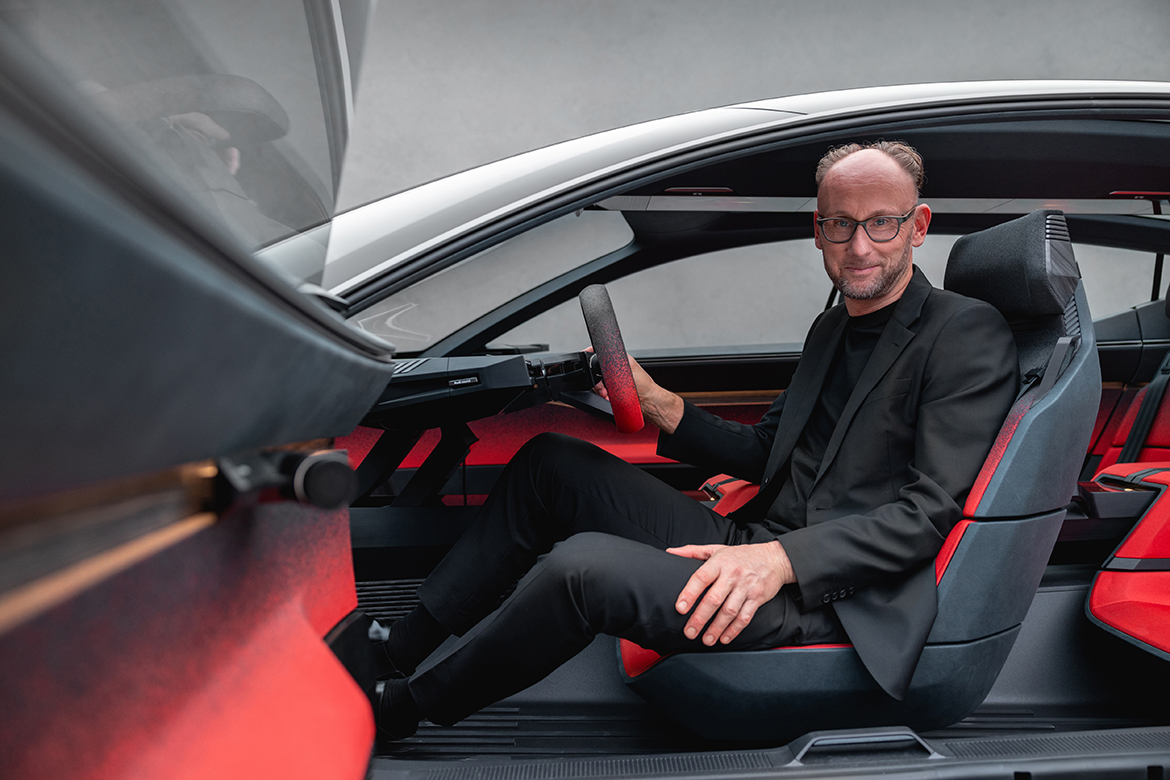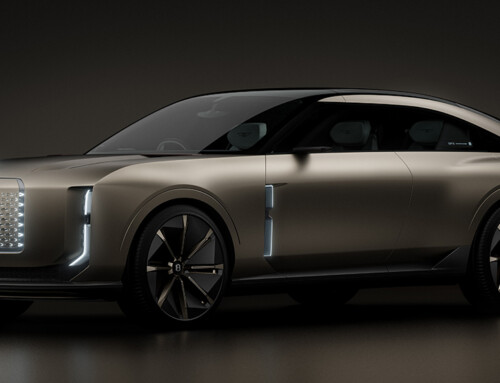“Part sedan, part coupe, part pickup. The Activesphere is a car with a thousand personalities”. Audi design chief Marc Lichte tells us about the fourth and final concept car in the ‘sphere’ family: after the Skysphere, Grandsphere and Urbansphere here is the Audi Activesphere. Designed at the Audi Design Studio in Malibu, California, directed by Gael Buzyn, in the words of its project leader, Charles Lefranc, “this is an avant-garde crossover coupé that combines the elegance of a Sportback, the practicality of an SUV and the off-road prowess of a hardcore 4×4”. Given its generous dimensions – 4.98 metres in length, 2.07 metres in width and 1.60 metres in height – the Audi activesphere concept fits right into the high-end segment. Typical of an electric car, the 2.97 metre wheelbase provides ample legroom for passengers. The car, with its distinctly muscular look, conceals its bulk thanks to its low overhangs and Sportback-like line.
The absence of sharp edges translates into smooth transitions between concave and convex surfaces, while the crystals form a significant part of the bodywork, as emphasised by the tailgate and the cockpit ceiling. The front of the activesphere concept evokes the brand’s family feeling, but embraces the future thanks to the transparent single frame that opens up an unprecedented view of the road to passengers. The generous wheel arches emphasise the presence of the four-wheel drive electric system and the off-road performance of the car, whose ground clearance can be increased or reduced by 40 mm compared to the standard 20.8 cm from the ground, favouring either off-road mobility or aerodynamics and, consequently, efficiency.
If Audi skysphere had introduced the variable wheelbase, Audi activesphere concept goes one step further, making metamorphosis one of its peculiarities. The rear area of the car, while allowing the transport of voluminous sports equipment, does not betray the Sportback profile, rather confirming its elegance and clean lines. If the driver so desires, the rear window slides longitudinally, overlapping the glass roof, while the lower section of the tailgate folds down similar to the tailgate of a pick-up truck, opening up a load space known as the ‘active back’ and equipped to transport two e-bikes. The C-pillars remain unchanged, confirming the car’s stylistic dynamism, while an electric bulkhead rises behind the rear seats, isolating the passenger compartment.
The show car debuts the innovative on-board function and information management concept called Audi Dimension. At the heart of the system, which combines the physical and virtual worlds to create mixed reality, are avant-garde augmented reality glasses. These go beyond traditional VR viewers, overlaying the physical world with 3D digital content. This model is the first Audi to adopt the Audi Dimension technology, with its unprecedented interactive dimension: with unprecedented optical precision, maximum resolution and pronounced contrast, the system brings displays and touch surfaces, not perceptible to the naked eye, into the driver’s field of vision. The user can thus enjoy multiple virtual tools and content. And if he focuses his gaze on a piece of information, showing interest, the system provides further details. Information content thus becomes elements capable of reacting to gesture commands. The driver’s hand, for example, can follow the line of gaze to scroll through the car’s functions, while the user interface – the virtual display generated by the visor – reacts to gestures like a conventional screen. In addition, virtual controls, such as the digital replica of the satellites at the doors, are adaptively placed in space, facilitating interaction with the driver.
Full design story in Auto&Design no. 259

